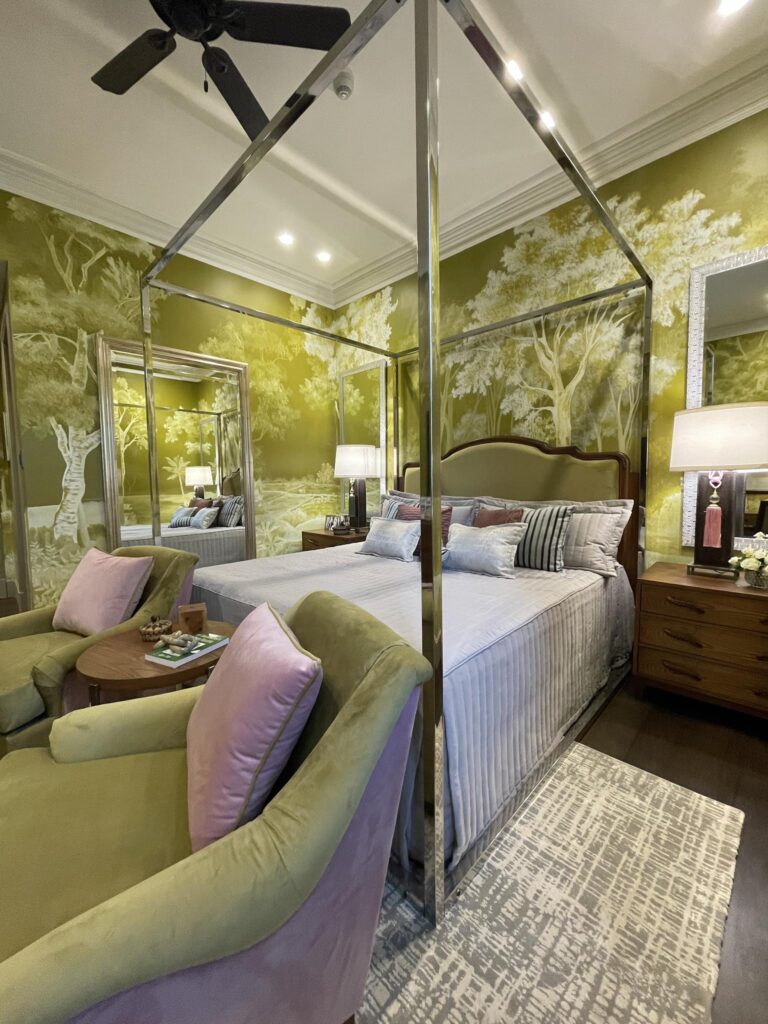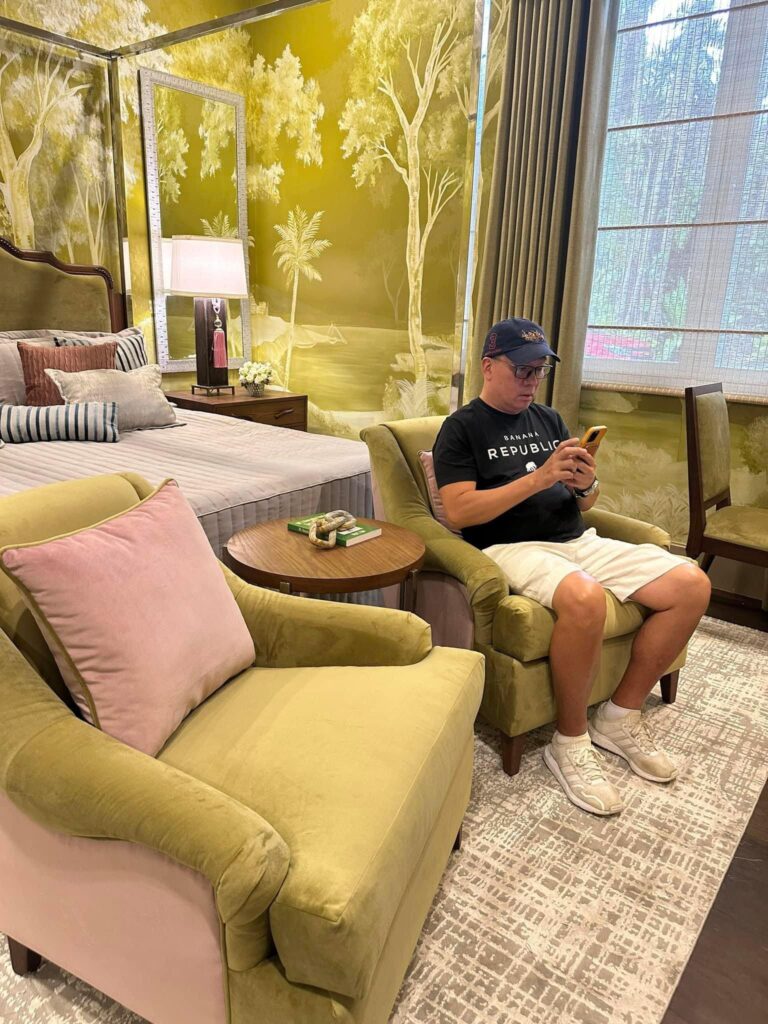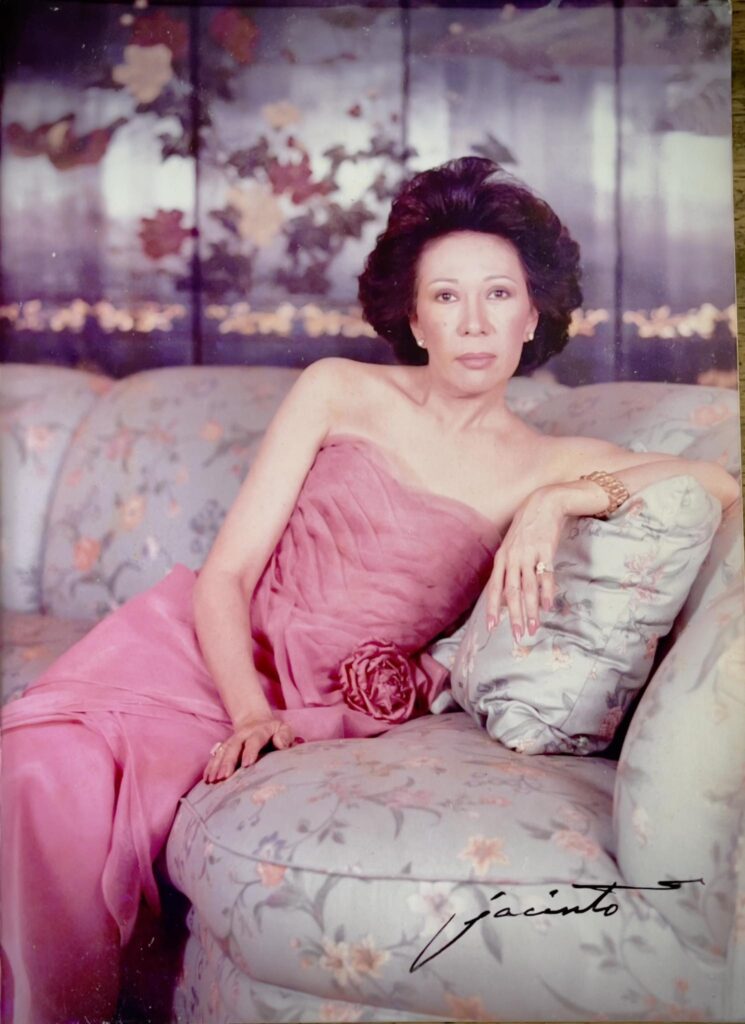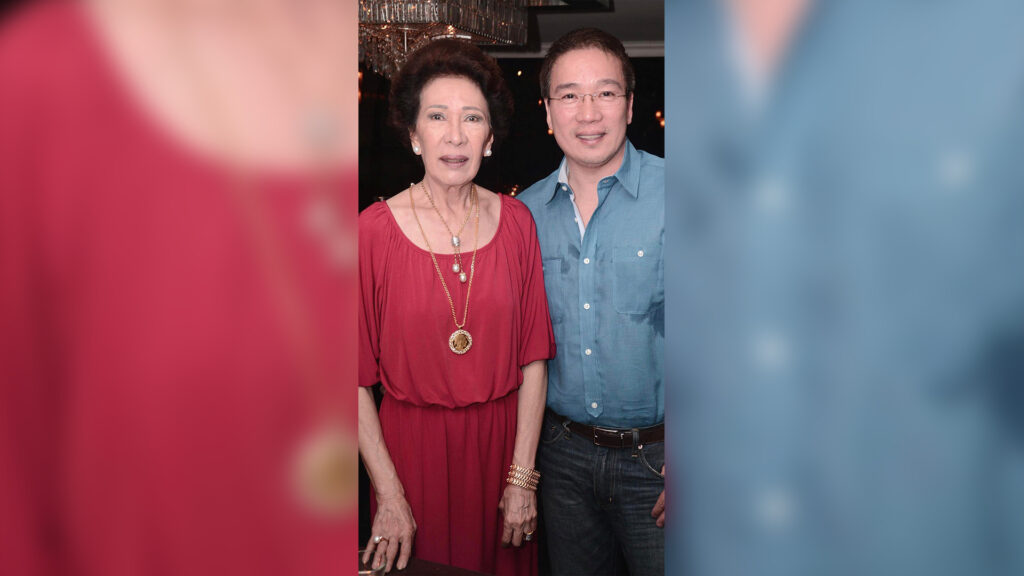(Ed’s note: This is first of a series of articles about interior designers who put together the various guest rooms of the Laperal Mansion, the presidential guest house, to be capped by the magnificent work of Jonathan Matti, the lead designer who was responsible for creating the splendid ambiance of most of the public spaces of this iconic decades-old structure.)

A son, the youngest of the brood, who constantly kept the company of his mom, interior designer Nena Villanueva who, in the second half of the last century, was responsible for the elegant interiors of some of the most beautiful homes in the gated villages, Tito Villanueva, could not have become something else and someone else in life. It would seem that he was destined to be the heir to his mom’s illustrious and highly esteemed career as an interior designer, specifically to the wealthy of this country in the decades when the rich were mostly noble in accumulating great fortunes and gracious in their ways.



Tito simply had to follow in the footsteps of his mother Nena, an icon of interior design in the 1960s, 1970s and 1980s. I recall keeping a copy of a detachable Reader’s Digest supplement featuring the impressive homes designed by the top interior designers of the era, among them, his mom’s rendition of a formal living room.
Through time, I would get to meet Tito, Nena’s son, whose works I have admired on newspaper stories and what he occasionally posts on his Facebook. This has led to a friendship of sorts, as we would get in touch and, yes, talk about his mother’s eminent career and his current practice.

It was a most welcome idea for the First Lady, Liza Araneta Marcos, with the support of Malacananang Social Secretary Bianca Zobel and her deputy Dina Arroyo Tantoco, to commission the designing and decoration of the guest rooms named in honor of the former presidents of the country. Jonathan Matti, on the other hand, designed Laperal’s public spaces and the Ferdinand E. Marcos presidential suite.

As it is Women’s Month, I am sharing with you the thoughts of Tito on his mother, Nena Villanueva, at the same time his take on the Ramon Magsaysay guest room.
Here is my interview with Tito Villanueva.
Surrounded by beautiful things
DAILY TRIBUNE (DT): Why did you choose to become an interior designer? Your mom is, of course, the iconic Nena Villanueva, one elegant and beautiful lady of Manila’s high society.
Tito Ocampo Villanueva (TOV): My mother is the late Nena Ocampo Villanueva, one of the pioneer professional interior designers of the country and a founding member of the Philippine Institute of Interior Designers. I guess I became an interior designer myself, like some families are doctors or lawyers, because of assimilation. It was part of our upbringing to be surrounded by order and beautiful things. I would accompany doctors or lawyers, because of assimilation. It was part of our upbringing to be surrounded by order and beautiful things. I would accompany her to her projects as I was getting older.
I enjoyed the start-to-finish process, renovations and building. We are also a family of architects and interior designers, notably a granduncle Architect Fernando H. Ocampo.
DT: Where did you train?
TOV: I recall training by simply attending to the furniture manufacturing side of the trade while I was still in high school. I would inspect construction sites, too, whenever possible, especially when I was already in college. That gave me more interest in the field even though I graduated with a business degree in DLSU ahead of becoming an interior designer professionally.
DT: In what way did your mother influence you in your approach to design?
TOV: I was influenced by spatial planning on the onset and color combination. I, of course, learned from experience, which developed my keen eye for storage and space planning, even more so that many projects are getting smaller than those days in the past.
Youngest of Magsaysay’s ‘barkada’
DT: You designed the Ramon Magsaysay guest room. Tell me more about your father’s friendship with President Magsaysay.
TOV: I know they were friends way back when he was single and the youngest of their barkada or group of friends. I’ve seen photos of them doing car repairs which my dad liked till he got old and, apparently, fishing. I recall visiting an uncle in Chicago, also a friend of Magsaysay, and a gangmate from way back when and fishing was still his hobby on weekends. The gangmates you call were his relatives too. Apparently, the late president was close to the Villanuevas of Pasay.
DT: Tell me about your family. You are the only one in the decorative arts. How did your mere observation of your mom turn into a career for you?
TOV: The artistic side comes from the Ocampo side of me. My granduncle Architect Fernando Ocampo and uncle Architect Pandot Ocampo are relatives of my mother. I now have a cousin architect and another interior designer too. Though they admit I have surpassed them by leaps and bounds.
I grew up in an environment of design and the good fortune of living with my mother’s aesthetics and grandmother who simply had an organized home. I guess this really got me interested in the arts from an early age.
I recently had a high school reunion the other day and some said I was good in the arts and they would admire my submission of works. I even forgot about that already.
Discouraged by his mom
DT: In what way did your mom influence your approach to designing? Did you have coaching sessions as soon as she saw or perceived your interest in her vocation?
TOV: She discouraged me from designing interiors in the beginning. She was not supportive and was always asking me to apply to this bank and this corporation… and I did, but never got employed. I had a very strong personality I wouldn’t get hired.
When time passed and she saw I was developing myself in the field and getting more projects, only then she realized I was destined to follow in her footsteps. She never mentored me, but because I would be in her office and job sites, I saw space planning and colors as the direct impact I learned from her practice.
Oh, should I say dressing appropriately as a designer is also emphasized by her.
DT: I am curious about the Ocampos and Villanuevas, your roots. You belonged to high society. If I may ask, did this go back to earlier generations or did this start with your parents? Who were their other friends in high society?
The Hizon-Ocampos of San Fernando, Pampanga, are an illustrious family I have to admit. They’re a huge clan of very successful business families and politicians. I know a Kapitan was part of the revolution in Pampanga having a monument in the plaza. Today I know a mayor and a governor are relatives.
The Chavez-Villaneuva clan is from Bacoor, Cavite, and Pasay City. Another Kapitan, Pascual Villanueva, the grandfather of my dad, was the first mayor of Pasay City. Unfortunately, no other son got into politics. They were landed but did not possess business savvy. They would sell as they needed extra money. My grandfather was an illustrious dentist of the rich society in his days in Escolta.
My grandparents are friends with the who’s who of their days. I heard stories about kamaganak ng lola mo si…
Universidad de Madrid alumna
DT: Tell me about your mom’s education as an interior designer.
TOV: She studied interior design at the Universidad de Madrid and the New York School of Interior Design.
DT: She must have had the cream of Manila’s high society as her clients. Can you cite some of these big names? And what projects did she do for them?
TOV: She did residential projects for the Garcia, Tambunting, Jacinto, Sison, Parsons and Gaspar families. Her commercial projects were Playboy Club of the Philippines and what was then known as the National Resources Office.
DT: You saw her at work. Did she assign you to do things for her?
TOV: I would accompany my mother to project sites as a young boy and eventually be assigned to check orders from furniture factories.
DT: Tell me about her friends in the profession. You met them, of course. Anyone who eventually became your mentor when your mom passed on?
TOV: She was active with the PIID. She held the position of president of the organization too. Of course, I knew her colleagues and I specially got close to the late Johnny Hubilla and Roland Laurena. They encouraged me to join them in the organization.
Hand-painted murals
DT: Tell me about your Malacañang Laperal Mansion experience. How many days did it take you to accomplish the project?
TOV: This project came as a surprise and given a tight two-month schedule from submission of designs to implementation during the holidays. But because of my discipline, I was the first to start renovation and completion on record with their engineer’s office. I would like to think I’m a stickler for being prompt, tidy and methodical. Knowing the schedules of completion helped.
DT: Did you get to work or at least talk with the First Lady since this is her project? What did she tell you about her vision for the guest house?
TOV: Of course, the first gathering was to explain the project. She was there and welcomed all of us. She was very charming and — despite me being a pure blooded “kakampink” — she welcomed me. I’m sure they have researched all of us because they knew our numbers and addresses at the onset. I had very cool talks with her like she knew me. Though it struck me she knew many of my cousins.
DT: Who did you work with in putting it together? I mean who were the other craftsmen and artists involved, the ones you hired or whose services you used? Can you name some brands like the lamps used, the carpet and so forth? Where did you source the materials? Who helped you in the execution of your design? Did you bring your staff?
I submitted plans for the electrical engineers of the place and instructed basically what to do from the beginning even with the basic paint works and cabinetry. I then gathered my team for the mural and furniture manufacturer and suppliers.
My lamps are custom-made and designed by me for the room. Carefully interpreting what I know of the late President Ramon Magsaysay, I emphasized his love for engines. It is of solid metal.
My hand-painted murals depict the rural life he grew up in with depictions of his love for fishing, farming and car repairs.
My furniture are custom-made with inserts of palay as handles crafted in Pampanga by Joanne Flores for Shack Furniture.
The sculpture by Eric Masangkay depicts fishing.
Elegance is born into
DT: How did you feel after you saw the result of your efforts? In what way does this project fulfill you?
TOV: I am very proud of the effort of the team that made the room possible. We had a few mistakes but these were easily corrected in time. I felt even prouder when it was chosen as the room to be placed on the front cover of a daily paper on its launch.
DT: What are your dream projects?
TOV: I guess a dream project is a client that lets the creative juices of a designer work and trusts fully the process even with a budget. I have always wanted to do a fine dining restaurant interior but never had a chance to be offered one.
DT: What is your advice to those who would like to pursue a career in interior design? Where should they focus? How can they be better at their craft and art?
TOV: Interior design is very competitive and it really takes a lifestyle to be a good designer. It isn’t learned in school but from exposures from travels and knowing what the moneyed likes. It involves a lot of taste and judgement, too. Some have said, ‘Elegance is born into not learned just easily.’
